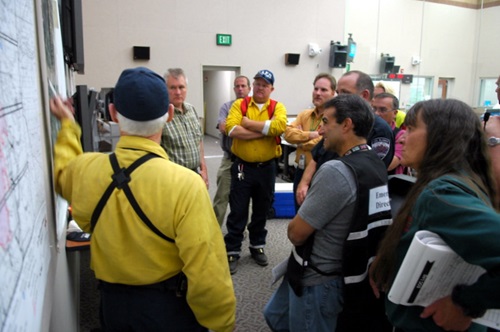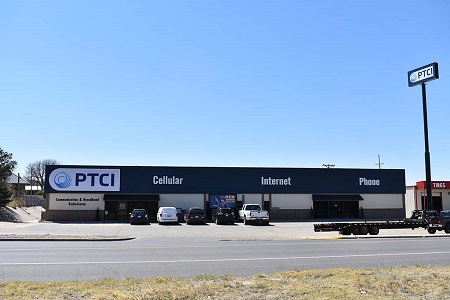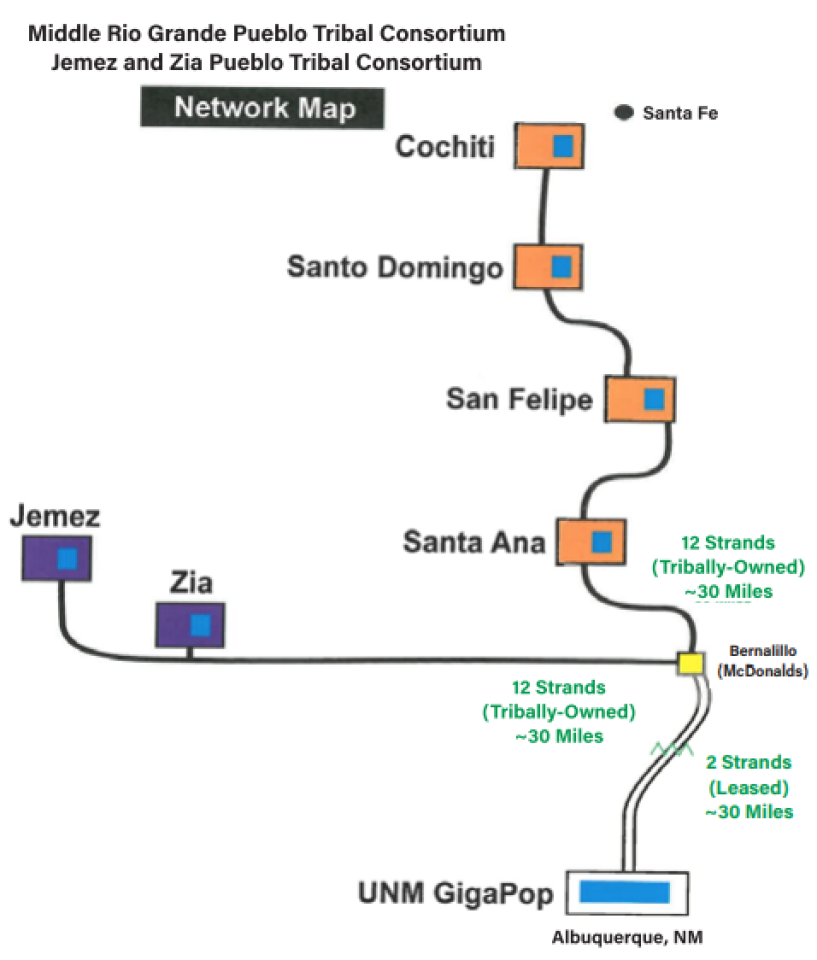
Fast, affordable Internet access for all.

Los Alamos County, New Mexico joins the growing list of municipalities looking to explore a community-owned broadband network in a bid to improve resident access to fast, affordable, next-generation fiber.
The request for proposal (RFP), originally issued August 13, called for design, planning, and construction partners for a locally-owned and operated fiber network. An updated RFP was issued on December 12, 2023 stating that applications for phase two of their planned project were deemed “incomplete.” The county has given potential partners until January 12 to respond.
“The county team is now reviewing the submitted proposals,” the county states. “Once one is selected and an agreement finalized, the county will request the council award a contract. This may occur in early 2024.”

The RFPs come after county council leaders passed a motion last January declaring “…that high-quality reliable telecommunication including broadband is an essential service.” Los Alamos County officials did not respond to repeated requests for comment asking for more detail on the county’s goals. Local outlets suggest more details should emerge in 2024.
New Mexico is poised to receive more than $635 million in broadband subsidies courtesy of the Broadband Equity Access and Development (BEAD) program, made possible in turn by the 2021 Infrastructure Investment and Jobs Act.
Panhandle Telephone Cooperative Inc. (PTCI) has announced the broadband provider will be dramatically expanding access to its fiber broadband services in New Mexico thanks to a new $43.4 million grant made possible by federal infrastructure legislation.
The Cooperative currently predominately offers fiber broadband, phone, and cellular wireless phone service to subscribers in Oklahoma and Texas. The $43 million cash infusion will allow the cooperative to expand access outside of its existing footprint into rural Union County, in northeast New Mexico.
As per grant rules, the network will deliver speeds of 100 Megabit per second (Mbps) downstream and 20 Mbps upstream, but the cooperative does not yet have a construction timeline or information on planned tiers and pricing.
PTCI’s existing deployments in Texas provide locals with uncapped fiber access at symmetrical speeds of 100 Mbps, 250 Mbps, and 1 Gbps for $60, $86, and $116 per month, respectively. The company stopped offering TV services in 2020, but launched its own cellular network in its existing territories starting in 2021.

The project’s $43 million grant for expansion into New Mexico was made possible courtesy of a recently announced fourth funding round for the U.S Department of Agriculture’s ReConnect Program. Last month the program announced another $714 million in grants and loans aimed at shoring up broadband access to long unserved or underserved rural Americans.
As voters went to the polls yesterday, broadband-focused initiatives and candidates could be found up and down the ballot all across the country.
Alabama
Alabama voters cast their ballots to decide on a state Constitutional amendment known as the Broadband Internet Infrastructure Funding Amendment. The measure sought to amend the state's constitution "to allow local governments to use funding provided for broadband internet infrastructure under the American Rescue Plan Act (ARPA) and award such funds to public or private entities."
That measure passed, garnering a “Yes” vote from nearly 80 percent of Alabama voters. With 73 percent of the vote counted late last night, 922,145 “Yes” votes had been tallied with 251,441 “No” votes.
Also in Alabama, Democratic U.S. Rep. Terri Sewell won her re-election bid to represent Alabama’s 7th congressional district. Sewell, whose district covers a large swath of the Alabama Black Belt, “spent much of her past two years in office bringing American Rescue Plan Act funds to rural Alabama, dedicated to healthcare, broadband access and infrastructure building,” as noted by The Montgomery Advertiser.
Colorado
The Centennial State is not listed as one of 17 states in the nation with preemption laws that erect barriers to municipal broadband because nearly every community that had a vote has passed it to nullify it. But more communities had to go through that unnecessary process yesterday due to the law known as SB-152 that bans local governments in the state from establishing municipal broadband service absent a referendum.
Alabama and New Mexico voters will soon be given the midterm option of changing their state constitutions to help boost broadband funding and deployment, albeit in notably different ways.
In Alabama, voters will head to the polls on November 8th to vote on a Broadband Internet Infrastructure Funding Amendment that would amend the state's constitution "to allow local governments to use funding provided for broadband internet infrastructure under the American Rescue Plan Act (ARPA) and award such funds to public or private entities."
County leaders have spent much of this year warning that Section 94 of the Alabama Constitution bans the state from granting public money or “things of value” to local governments for public and private use. That’s a significant problem when it comes to the $276 million in ARPA funds Alabama Governor Kay Ivey earmarked for broadband expansion last March.
Programs such as the USDA’s ReConnect and the FCC’s Rural Digital Opportunity Fund (RDOF) haven’t run afoul of the Alabama Constitution because they both involve the federal government directly doling out funds for broadband expansion. But ARPA funding allows local municipalities to distribute a portion of state-allocated funds.
Snapshot
Maryland plans to funnel American Rescue Plan Act funding towards community broadband
Vermont Governor bolsters House plan backing Communications Union Districts
A national movement to address digital inclusion ignites
See the bottom of this post for related job openings
State Scene
Maryland
Maryland State Governor Larry Hogan made digital equity and literacy a top priority of the state when he signed H.B. 97, the Digital Connectivity Act, into law on April 13. The new law establishes the Office of Statewide Broadband (OSB) within the Maryland Department of Housing and Community Development to create a plan to get all Marylanders connected to affordable, high-speed Internet by 2026. The OSB will also assist in administering $300 million for digital equity initiatives out of the $3.9 billion Maryland received in American Rescue Plan funds.
The $300 million allocation will be broken down into separate pots of money to address physical infrastructure, affordability, and adoption: $45 million will be for grants that support and expand municipal broadband networks; $75 million for affordability initiatives to subsidize the cost of monthly service fees and devices for eligible residents who are subscribers to private Internet Service Providers (ISPs); and $150 million dedicated to deploy broadband infrastructure and expand connectivity in both urban and rural areas. In addition, $10 million is earmarked for local government and community-based solutions, and $6 million will support adoption initiatives, including $4 million for a new division under the University System of Maryland to develop curriculum on digital literacy and addressing the broadband gap.
Snapshot
Colorado House passes bill that reduces broadband board membership and conceals mapping data
Michigan legislature approves bill granting ISPs property tax exemptions
New Mexico and Virginia bills await governors’ action
The State Scene
Tennessee
Tennessee is home to some of the most creative local solutions to bridging the digital divide. Municipal fiber networks across the state, including Chattanooga’s EPB Fiber network, Morristown’s FiberNet, and Bristol’s network, have been a boon to economic development, job creation, educational initiatives, and overall quality of life in the past decade.
The next city to potentially join the ranks of providing municipal broadband in Tennessee is Knoxville. On March 11, the Knoxville Utility Board approved a business plan to provide Internet services across its service area.
Despite the widespread success of municipal networks across Tennessee, the state restricts what populations they can serve. Although Tennessee law allows cities and towns to offer advanced telecommunications services if they have a municipal electric utility, the networks are not permitted to offer those services to residents who live outside of the utility’s service area. Removing these restrictions would permit substantial fiber expansion to connect more residents at no cost to the state or taxpayers.
This is the first in an ongoing series of state legislative roundups of bills that advance the prospects of success for community broadband networks. Feel free to reach out to Jericho Casper with tips or corrections.
High-Speed Hirings - Your Mission, Should You Choose To Accept It
Investments in broadband infrastructure at the municipal level are on the rise, creating more employment opportunities in the broadband industry. Advocates for municipal broadband who feel called to make a change in their communities should check out these job openings:
Dayton, TX
Applications are being accepted for a Broadband Manager/Head Network Engineer to oversee the business and technical operations of DayNet — a new Internet utility emerging in Dayton, Texas — in the process of constructing a citywide Fiber-to-the-Home (FTTH) network.
Whatcom County, Washington
Applications are being accepted for two positions currently open at Whatcom County PUD: Broadband Services Analyst and Electric Utility Analyst.
The State Scene
From coast to coast, state lawmakers are aiming to create centralized broadband clearinghouses and improve permitting processes. Here’s a snapshot:
New Mexico Legislature Seeks Reforms to Craft State Broadband Plan
With merely five days remaining in the state's legislative session, New Mexico legislators are pushing to advance bills that would set up a centralized body within the state government tasked with improving Internet access.

This week on the podcast Christopher talks with Catherine Nicolaou, External Affairs and Marketing Manager for Sacred Wind Communications, a rural local exchange carrier in NW New Mexico that has been focused on serving the Navajo Nation communities there. She shares the history of Sacred Wind, from buying copper infrastructure from Century Link 13 years ago in a region where just 26% of the households had Internet access to its 400 miles of fiber infrastructure today, allowing it to bring broadband to more than 92% of those living there.
Catherine tells Christopher how the company has had to rely on the full array of technologies to bring broadband access to families in a large area with particular geographic and topographic challenges, from Citizens Broadband Radio Service (CBRS) to TV White Space (TVWS) to infrared to fixed wireless and, of course, Fiber-to-the-Home (FTTH). They talk about what it means to Sacred Wind’s subscribers that the provider has never raised prices, and the work it’s been doing during the pandemic to make sure everyone gets and stays connected.
Don’t forget to check out our new show, Connect This!, where Chris brings together a collection broadband veterans and industry experts live on Youtube to talk about recent events and dig into the policy news of the day.
This show is 30 minutes long and can be played on this page or via Apple Podcasts or the tool of your choice using this feed.
Transcript below.
We want your feedback and suggestions for the show-please e-mail us or leave a comment below.
Listen to other episodes here or view all episodes in our index. See other podcasts from the Institute for Local Self-Reliance here.
Thanks to Arne Huseby for the music. The song is Warm Duck Shuffle and is licensed under a Creative Commons Attribution (3.0) license.
A new report out by the American Library Association shows how community anchor institutions — and libraries in particular — can serve as central players in expanding tribal connectivity efforts around the country. “Built by E-rate: A Case Study of Two Tribally-Owned Fiber Networks and the Role of Libraries in Making It Happen" [pdf] looks at the striking success of tribal efforts in New Mexico in putting together a coalition of actors to dramatically improve Internet access in the region.
The report examines networks built by two consortiums situated in the middle of the state in the summer of 2018: the Middle Rio Grande Pueblo Tribal Consortium and The Jemez and Zia Pueblo Tribal Consortium. An endeavor initially spearheaded by the Santa Fe Indian School (which long ago recognized the need for virtual learning, the value of fast, affordable Internet and the ongoing cost of slow, poor, high monthly costs), “Built by E-Rate” details how they came into being and the obstacles they faced along the way, and offers policy recommendations moving forward.

Faster Speeds, Lower Costs
In November 2017, about 200 people attended the first Indigenous Connectivity Summit in Santa Fe, New Mexico. The summit brought together activists, network administrators, researchers, and many more to consider the successes and challenges in improving Internet access in indigenous communities. The Internet Society has released the Indigenous Connectivity Summit Community Report outlining next steps on leaving the summit.
I was on the ground in Santa Fe and experienced first-hand the collaborative discussions that took place. Although brief, this report contains the key takeaways from these conversations. The saying, “for the Community, with the Community, by the Community,” appears as a title in the report and was a constant refrain during the summit. If we are to have affordable, reliable Internet access in our communities, we must have an active role in creating the solution.
Highlights from the Report
The ten page document outlines recommendations on what will make this possible. Some of these action items are creating sustainable connectivity and building capacity within our communities. Policies that can support these goals include making spectrum easier to access, developing collaborative backhaul solutions, and collecting better data on connectivity.
The report underscores how Internet access relates to native nations’ autonomy and self-determination. Internet access can support cultural revitalization and language preservation as well as economic development. The summit offered a creative space to dive into the details and learn from one another.
More Info
Read the report on the Internet Society’s website or download it here If you want to get into more details or to experience the summit for yourself, watch a recording of the event: